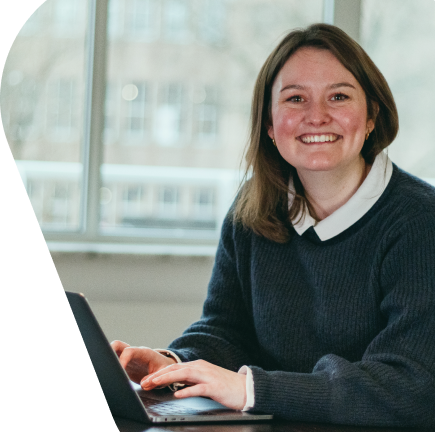Technical property management has moved from the operational sidelines to the strategic core of international real estate. For owners and asset managers with portfolios spanning multiple countries, from office towers in Frankfurt to logistics hubs in Rotterdam and retail centres in Madrid, the ability to manage technical operations consistently and transparently is no longer a competitive advantage. It’s a necessity.
Yet for many, this level of control is still out of reach. Processes differ by market. Key performance indicators (KPIs) are defined inconsistently. Data is scattered across local tools and inboxes. Compliance is reported differently in each country. Supplier performance is evaluated in isolation. Maintenance budgets are set without direct reference to asset condition or lifecycle data. And communication between property managers, owners, and suppliers is spread across countless emails and chats with no central record.
In this environment, strategic decision-making is compromised. The questions that matter most, Which buildings carry the highest compliance risk? Which suppliers deliver best value? Which property managers consistently meet service levels?, cannot be answered with confidence. The information exists, but it’s fragmented, inaccessible, and incomparable.
Key Takeaways
- Fragmented technical property management across countries creates inefficiencies, inconsistent KPIs, and limited visibility.
- One centralised operating model enables portfolio-wide consistency, comparability, and strategic control.
- KPI alignment across all assets and countries is essential for meaningful performance measurement.
- An asset-centric approach ensures all processes, budgets, and data are connected to the building they relate to.
- A centralised property management platform integrates compliance, ticketing, procurement, supplier management, and communication in one hub.
- Implementation through phased rollout allows teams and suppliers to adopt and adapt to the model successfully.
- Within 12–24 months, portfolios gain provable compliance, improved SLA delivery, better supplier performance, and more accurate maintenance budgets.
The fragmented state of international Technical Management
The current reality of international property management is defined by fragmentation. Each country works within its own regulatory framework, shaping local processes and workflows. Compliance cycles vary, with inspection requirements, reporting formats, and evidence standards differing widely.
Technology landscapes are equally varied. Some property managers rely on advanced building management software; others still track key activities in Excel. Reporting structures follow local preferences, with no standardised format or shared KPI dictionary.
Supplier relationships are typically managed locally, with contracts stored in different systems and performance reviews based on different criteria. Procurement processes follow local norms, missing the benefits of portfolio-wide sourcing, competitive tendering, and consistent quality standards.
Even the most fundamental KPIs are subject to interpretation. A “resolved” tenant request in one market might mean acknowledged, in another it might mean completed and signed off. Without alignment, portfolio-wide reporting becomes a patchwork of incomparable data points.
One operating model, one KPI framework, one central hub
Modern technical property management requires a fundamental shift. Instead of treating each market as a standalone operation, portfolios must be managed through a single, centralized operating model.
At the heart of this vision is the building as the central data anchor. Every process, compliance tracking, maintenance budgeting, ticketing, procurement, supplier performance evaluation, communication, is connected to the asset. All data, from inspection reports to budget forecasts, is linked to the building it concerns.
This asset-centric approach ensures:
- Compliance scores are calculated consistently across all assets.
- Tenant SLA performance is measured using identical definitions and survey methods.
- Supplier performance is evaluated against the same benchmarks in every market.
- Maintenance budgets are tied to asset condition and lifecycle, not arbitrary estimates.
- All communication and tasks are recorded and traceable within a central hub.
The outcome is a portfolio managed as a single, unified system rather than a collection of disconnected operations.
Overcoming the core challenges of cross-border operations
Reaching this level of integration means addressing structural and cultural challenges that are common across global portfolios.
Regulatory variation is inevitable. Compliance requirements differ between countries, and those differences must be accommodated without allowing them to fragment every other aspect of technical management.
KPI inconsistency undermines confidence in portfolio reporting. Without a single KPI dictionary, comparisons are meaningless and decision-making suffers.
Communication silos hinder accountability and audit readiness. When key discussions and task updates happen in private email chains or messaging apps, evidence is lost and tasks fall through the cracks.
Supplier management gaps reduce leverage and quality control. Without a portfolio-wide view of supplier performance, high performers cannot be replicated across markets and underperformance can go unchecked.
Budget disconnection leaves maintenance spending unaligned with actual asset needs, often leading to overspend in some areas and underinvestment in others.
KPI consistency: The foundation of modern Technical Management
The ability to compare performance across countries depends on establishing a consistent set of KPIs that apply everywhere in the portfolio. These KPIs form the language of modern technical property management.
A compliance score calculated the same way for each building allows immediate identification of risk areas. A tenant SLA score based on uniform definitions and timing rules ensures service performance can be compared across all markets. A supplier performance score built on the same quality, timeliness, and safety metrics enables portfolio-wide benchmarking. Maintenance budgets can be measured not just by spend, but by efficiency and alignment with asset condition. And property manager quality can be assessed by process adherence, reporting accuracy, and tenant service delivery.
Building around the asset
An asset-centric model ensures that every process and data point is tied directly to the building. Compliance inspections are linked to the relevant systems and components. Ticket histories connect tenant issues to resolution times and responsible parties. Supplier contracts and performance data are stored against the buildings they service. Maintenance budgets are linked to historical and forecasted works for that asset.
This creates a complete operational history for each building, ensuring that portfolio data is not abstract but grounded in the real condition, performance, and service history of the assets themselves.
From siloed systems to a single source of Truth
Delivering this model requires technology designed for multi-country, multi-stakeholder technical management. A centralized property management platform is essential.
Such a platform must integrate local compliance rules into a global framework, ensuring that legal differences are respected while maintaining a unified process. It should manage tickets, tasks, inspections, procurement, and supplier performance in one place. It must capture evidence as work is completed and link all data to the relevant asset. It should provide real-time dashboards that allow both high-level portfolio oversight and detailed drill-down to specific assets or issues.
When all processes flow through one platform, the result is not only operational efficiency but also strategic clarity.
Implementation: from pilot to portfolio-wide rollout
Transformation of this scale cannot happen overnight. The most effective approach begins with defining the KPI framework and operating model, then piloting them in one country or asset type. This allows processes to be refined based on real-world usage.
Once proven, the model is rolled out in phases to other countries, with training and change management ensuring adoption. Supplier and procurement processes are standardised as part of the rollout, creating a central supplier registry and consistent performance scoring. Maintenance budgets are integrated into the platform, tying spending directly to asset data.
The Impact: Compliance, quality, and strategic control
Within 12 to 24 months of adopting a centralised, KPI-driven model, portfolios see measurable gains. Compliance becomes provable in real time. SLA delivery improves, and tenant satisfaction scores rise. Supplier performance becomes transparent, enabling informed renewal and sourcing decisions. Maintenance budgets become more accurate and better aligned to asset needs. Decision-making becomes faster, more confident, and grounded in consistent, comparable data.
This is the essence of modern technical property management: one operating model, one KPI framework, one platform — with the building at the centre and all processes and data connected to it.
Conclusion: Beyond Borders
The future of technical property management in international portfolios lies in moving beyond fragmented local operations toward a centralised, asset-centric, KPI-driven model. With compliance, maintenance budgets, supplier performance, procurement, ticketing, and communication all managed in one hub, owners gain the visibility, control, and consistency needed to protect and grow asset value in an increasingly complex market.
FAQ
What is technical property management?
Technical property management involves the operation, maintenance, and improvement of the technical systems and physical components of a building, ensuring compliance, efficiency, and long-term asset value.
Why is centralization important in technical property management?
Centralization standardizes processes and KPIs, enabling consistent performance measurement and governance across an international portfolio.
How does technical management improve building compliance?
By integrating compliance tasks into a central platform with evidence capture, compliance can be tracked and proven in real time.
What role does KPI consistency play in technical property management?
KPI consistency ensures performance is measured the same way everywhere, making comparisons meaningful and actionable.
How does technical property management impact maintenance budgets?
Linking budgets to asset condition and historical data improves forecasting accuracy and aligns spending with strategic priorities.
Can technical management improve tenant satisfaction?
Yes. Standardising SLA tracking and service delivery ensures tenants experience consistent, high-quality service in every location.
What is the first step to improving technical property management?
Define a consistent set of KPIs and processes, then pilot them in one market before scaling.
How does a centralized platform help in technical property management?
It unifies processes, data, and stakeholders in one system, ensuring complete visibility and control over operations.
How does technical management improve supplier performance?
By using the same scoring criteria across all markets, supplier performance can be accurately compared and improved.
Is technical property management only about compliance?
No. While compliance is essential, it also focuses on service quality, supplier efficiency, budget control, and tenant satisfaction.






